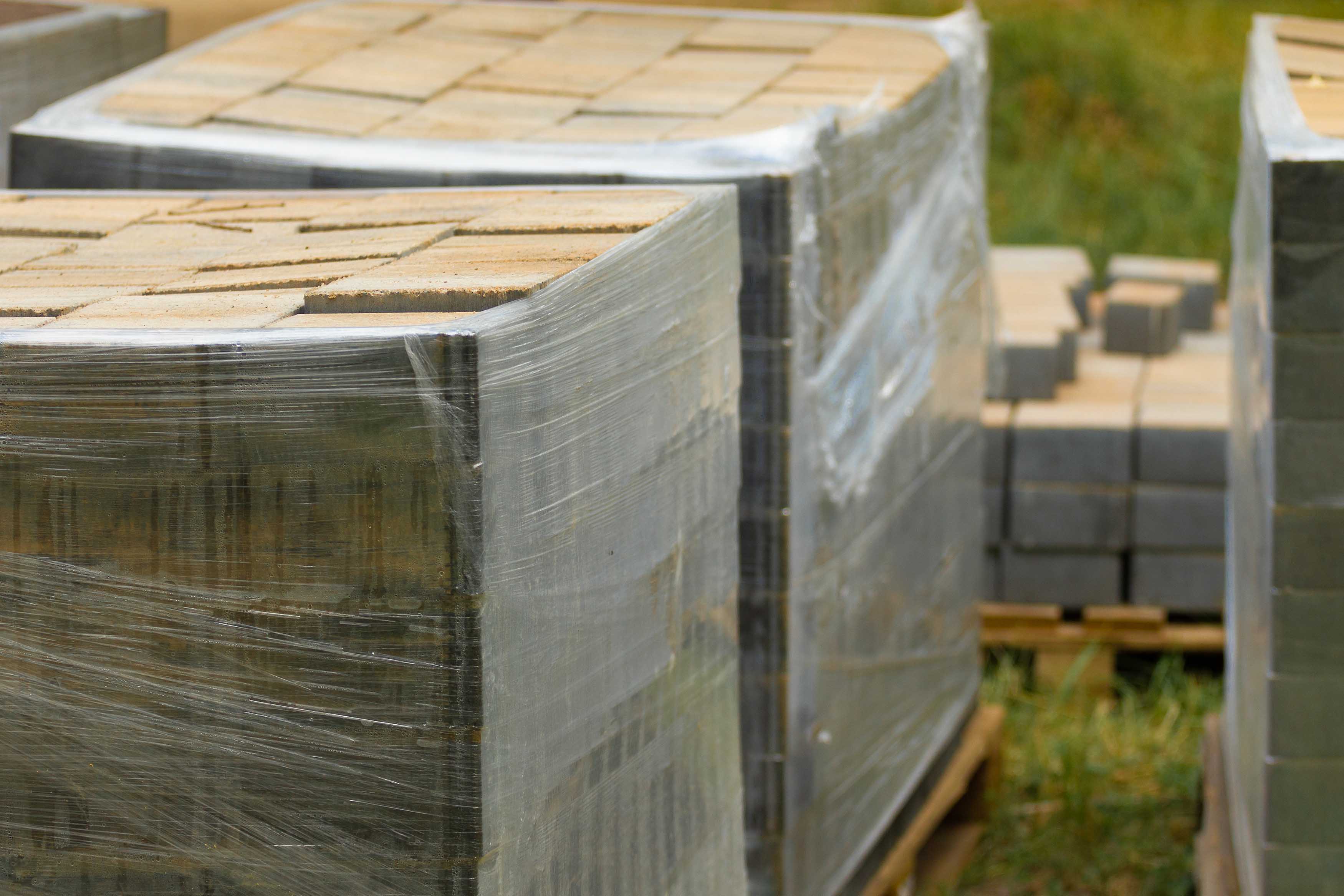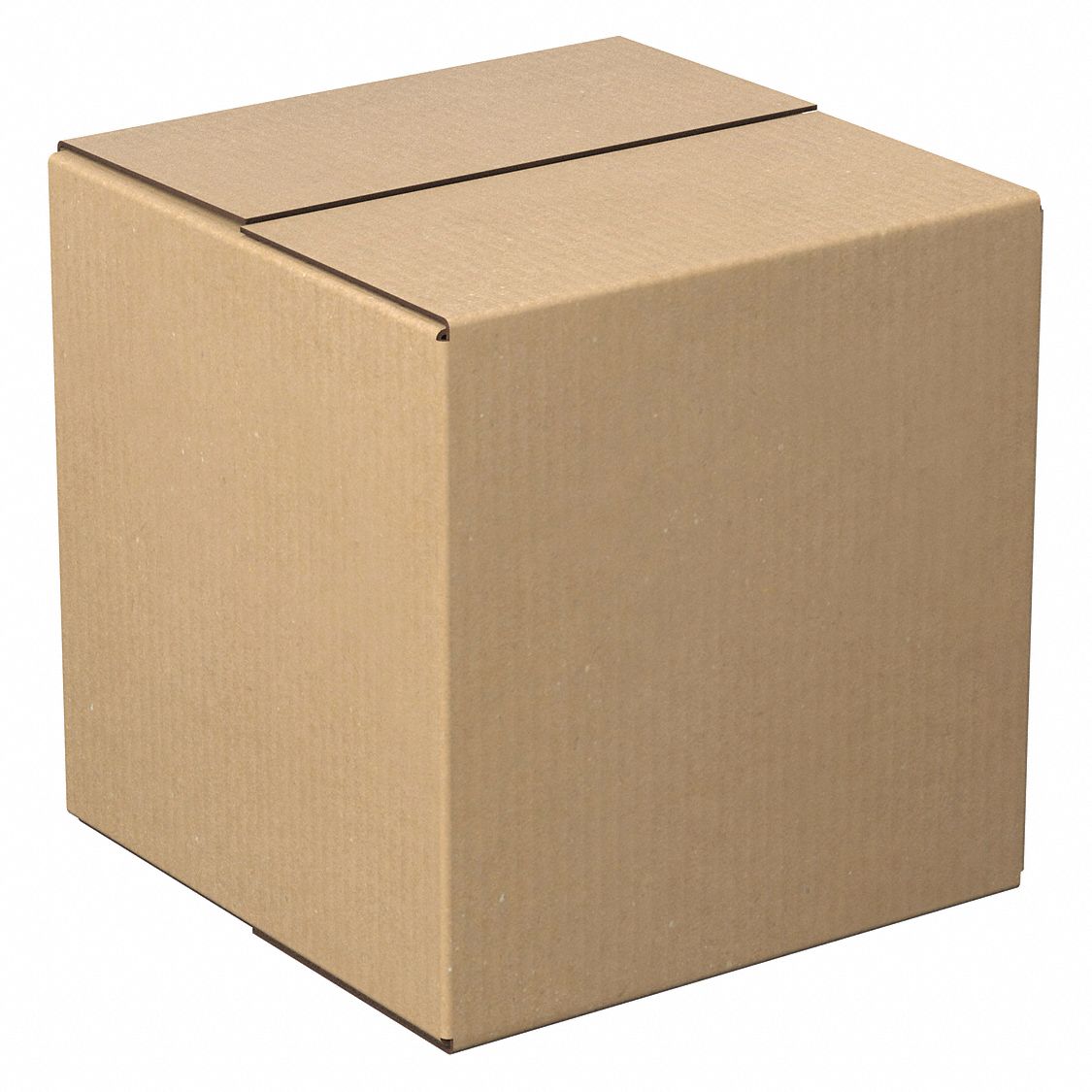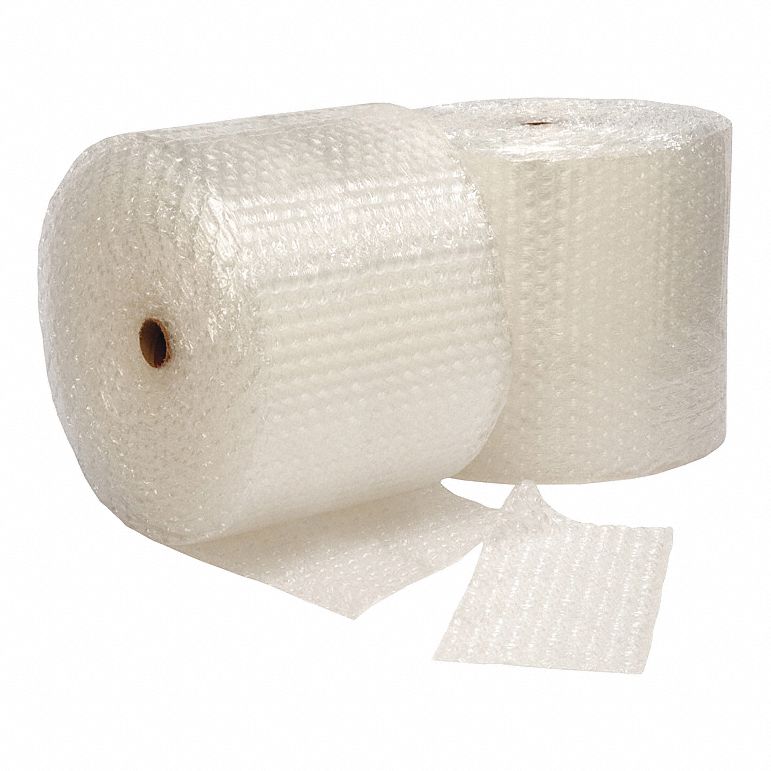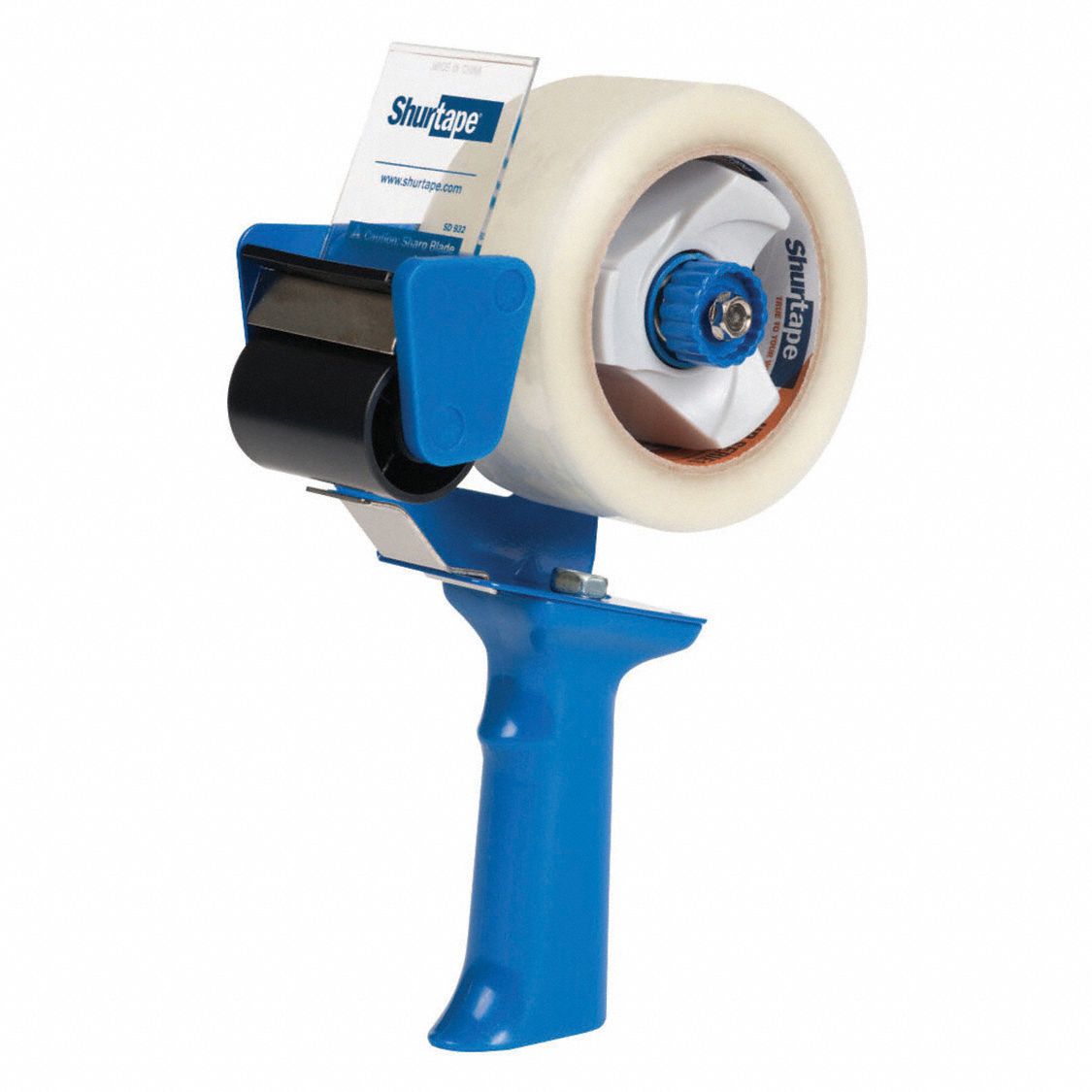

Guide to Choosing the Right Stretch Wrap
By Grainger Editorial Staff 7/25/21
Often the terms stretch wrap and shrink wrap are used interchangeably, but these versatile materials have different purposes and are applied differently. Stretch wrap is an elastic plastic material that can be stretched tightly over material loads to secure the load for shipping. By contrast, shrink wrap is often used to bundle smaller items together. Shrink wrap can be applied loosely and then heated to shrink it down to create a vacuum seal that protects items from environmental forces like weathering or dust.
Stretch wrap typically comes in continuous rolls of plastic in varying degrees of strength and load capacity. Each type features properties specific to their intended application. For example, some wraps are meant to conceal contents from view for security purposes. Others are specifically designed to protect shipments from moisture, dust or static. Stretch wrap can be applied by hand or machine, depending on the job.
The gauge is the measure of the wrap's thickness, which varies depending on purpose. Generally the higher the gauge, the higher its resistance to breakage. General-purpose 80-gauge wrap is the industry standard, and can secure loads up to 2,400 lbs. Higher-gauge wraps tend to be a little more expensive, so it's important that you choose the gauge that's right for the load. It's also important to keep in mind that while higher gauge wraps are thicker, and a bit more expensive, the higher strength means you don't need to wrap around loads as many times as a thinner gauge wrap, so you use less and help reduce the incidence of worker fatigue, especially if this is a task that is repeated throughout a worker's day.
Pre-stretched wrap is mechanically stretched almost to the breaking point and offers a lighter-weight option to the industry standard 80-gauge films while providing the same performance for load stability and tension. These wraps can also help to prevent worker fatigue because they require less energy to apply. Some newer options, such as the high-performance technology wraps, now offer better puncture resistance and strength at lower gauges. Here's a quick look at the most common stretch wrap gauges, and their applications.
| Stretch Wrap Gauge | Application, Load Capacity |
|---|---|
|
25 – 30 GA |
Pre-Stretched film performs as standard gauge films, for loads up to 2,400 lbs. |
|
35 – 39 GA |
Pre-Stretched film performs as standard to heavier duty gauge films, for loads up to 4,000 lbs. Stiffer, and tighter with less stretch, handles loads up to 1,800 lbs. |
|
37 – 42 GA |
High Performance film technology matches the strength of standard 60 – 70 gauge films, handling loads up to 2,000 lbs. |
|
47 – 55 GA |
High Performance film technology matches the strength of standard 70 – 80 gauge films, handling loads up to 2,500 lbs. |
|
61 – 65 GA |
High Performance film technology matches the strength of standard 80 – 90 gauge films, handling loads up to 3,000 lbs. |
|
75 GA |
High Performance film technology matches the strength of standard 90 – 120 gauge films, handling loads up to 4,000 lbs. |
|
50 – 60 GA |
General Purpose Light duty gauge films suited for loads up to 1,600 lbs. |
|
70 – 90 GA |
General Purpose Standard duty gauge films suited for loads up to 3,000 lbs. |
|
120 GA+ |
General Purpose Heavy duty gauge films suited for loads up to 4,000 lbs. |
While many wraps are available in both hand or machine grade, some are meant to be applied by hand only. If your application requires wrapping by hand, there are a variety of tools available to make this process easier, including dispensers, handles, applicators and others. Here's a quick guide to 10 common types of stretch wrap and their applications.
| Type of Stretch Wrap | Gauge | Hand or Machine Grade | Best Uses |
|---|---|---|---|
|
50-120 |
Both |
Most common films, works for most applications, in a range of gauges for a variety of tasks. |
|
|
37-75 |
Both |
New technology films offer high strength and puncture resistance at a thinner gauge than general purpose wraps. |
|
|
80 |
Both |
Protects electronics in shipment from static discharge. |
|
|
80 |
Hand |
Netted or vented, allows air circulation around product. Typically used for shipping produce or items that require refrigeration. |
|
|
80 |
Hand |
Indicates how contents should be handled, shipped or stored. Also used for product identification, sorting or routing purposes. |
|
|
80-100 |
Both |
Protects ferrous items prone to corrosion with a barrier that protects parts from ambient moisture. |
|
|
80 |
Hand |
Covers more of a pallet than typical width, cuts down on worker fatigue, because fewer repetitions are needed. |
|
|
80 |
Hand |
Preprinted with warning messages, Indicates how contents should be handled, shipped or stored. |
|
|
25-39 |
Hand |
Provides consistent wrapping tension, good load stability, and is lightweight and easier to handle than higher-gauge wraps. |
|
|
80 |
Both |
Protects privacy, aids in theft prevention. |
This chart illustrates the most common types of stretch wrap and their uses. However, this overview doesn't include the many variations available to help you find the exact match for the job. Use this chart as a guideline to help you narrow down your choices. If your company depends on stretch wrap as an essential part of doing business, it might be worthwhile to take a little inventory on the types of wrap you're using and why. If you're using the same wrap product for every job, that might not be optimal, If, for example, the gauge is too thick for the load, you may be spending more than you need to. Over a year's time, what may seem insignificant can really add up.
It's wise to re-evaluate your company's day-to-day practices regularly to make sure you're getting the most out of your budget. Grainger offers a wide variety of stretch wraps and packaging materials for all of your shipping needs.

Safety Management
6 Tips to Help Prevent Slips, Trips and Falls
Identify the fall hazards in your workplace and implement a fall safety program. Check out these tips from Grainger so you can mitigate risk.
![]() Our Latest KnowHow
Our Latest KnowHow

Facility Pest Control: How IPM Helps Safely Manage Insects
Discover safe, compliant pest control with IPM. Find tips for insect monitoring, sanitation and safe insecticide use in commercial facilities.
The information contained in this article is intended for general information purposes only and is based on information available as of the initial date of publication. No representation is made that the information or references are complete or remain current. This article is not a substitute for review of current applicable government regulations, industry standards, or other standards specific to your business and/or activities and should not be construed as legal advice or opinion. Readers with specific questions should refer to the applicable standards or consult with an attorney.













